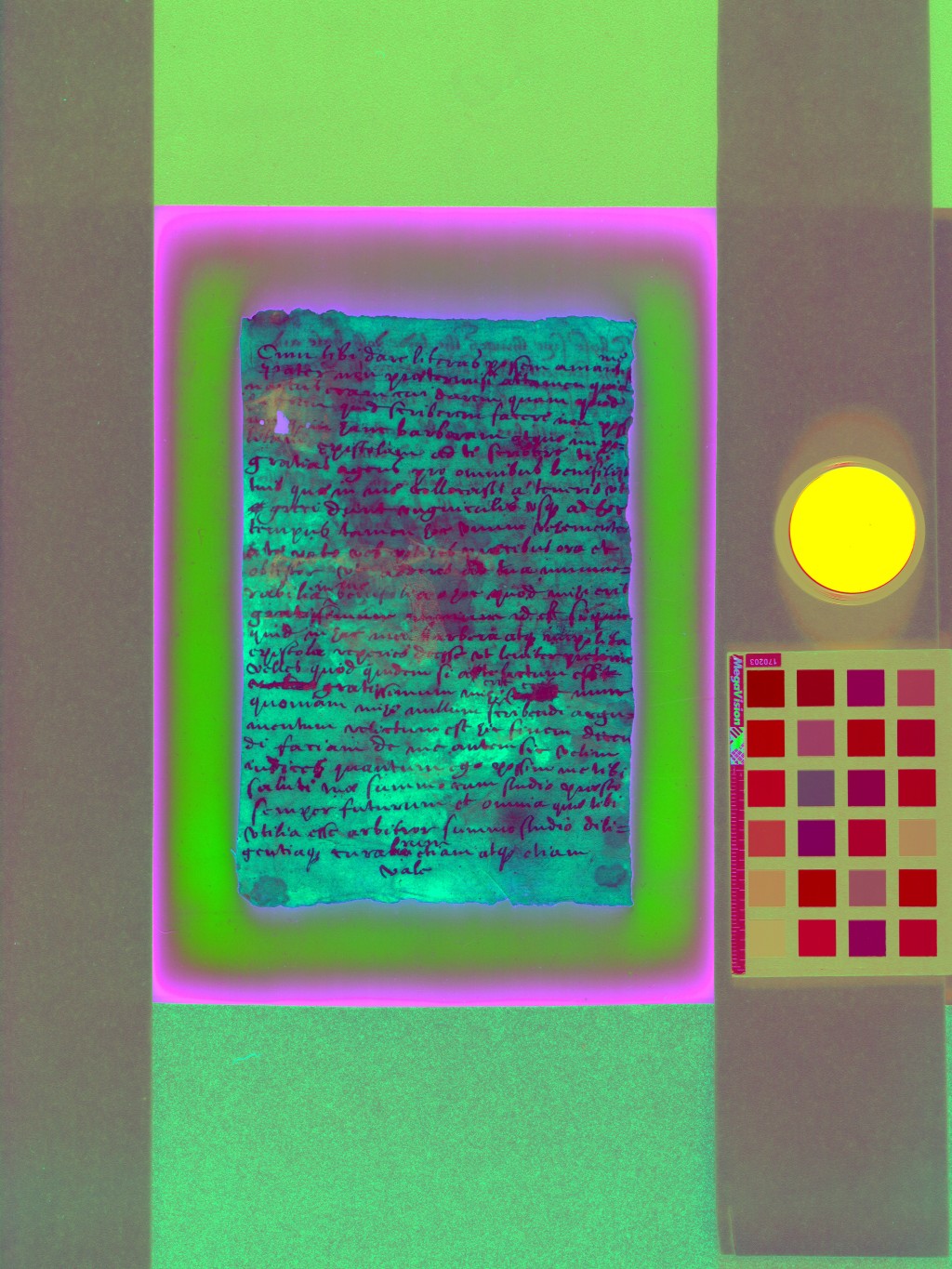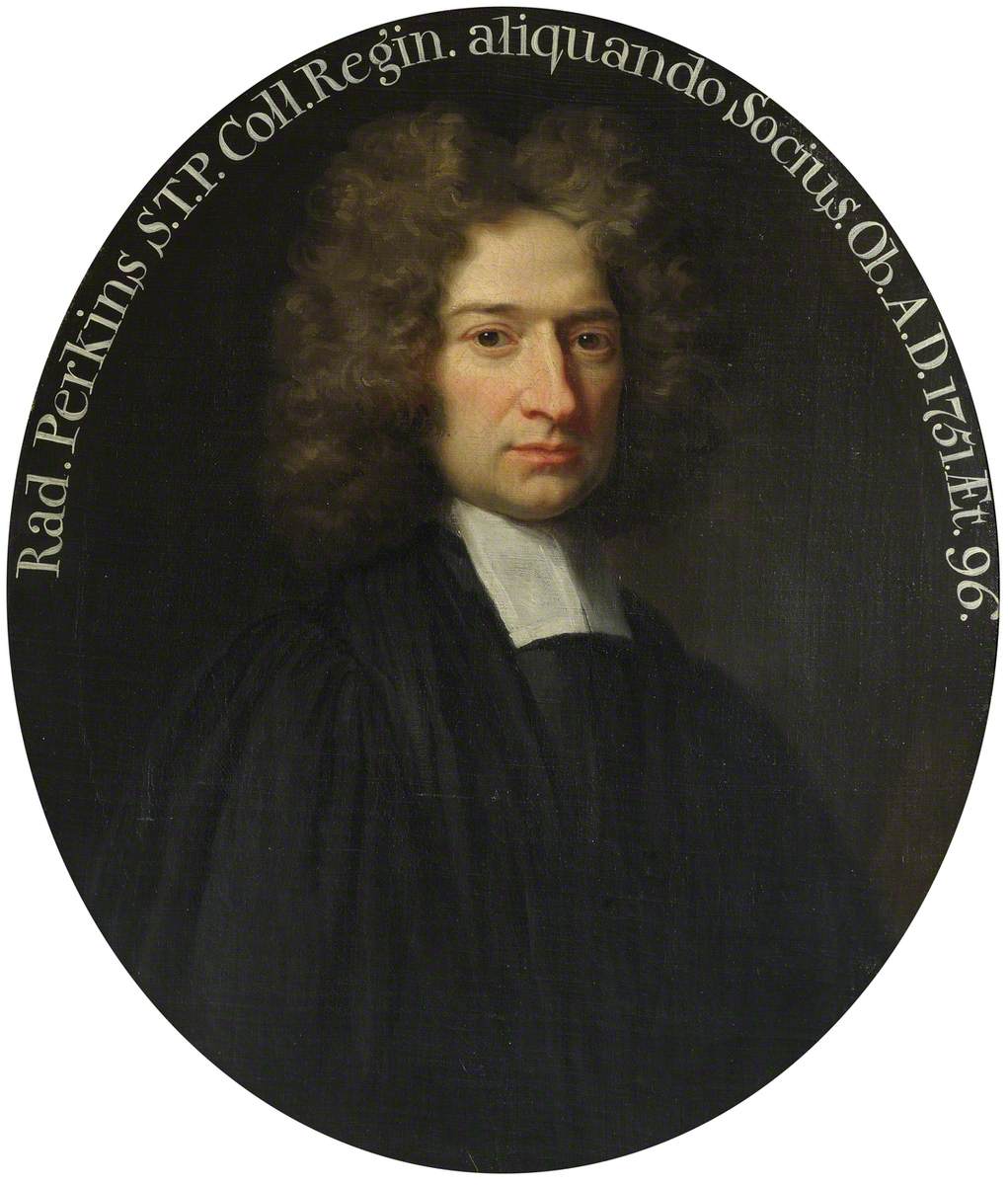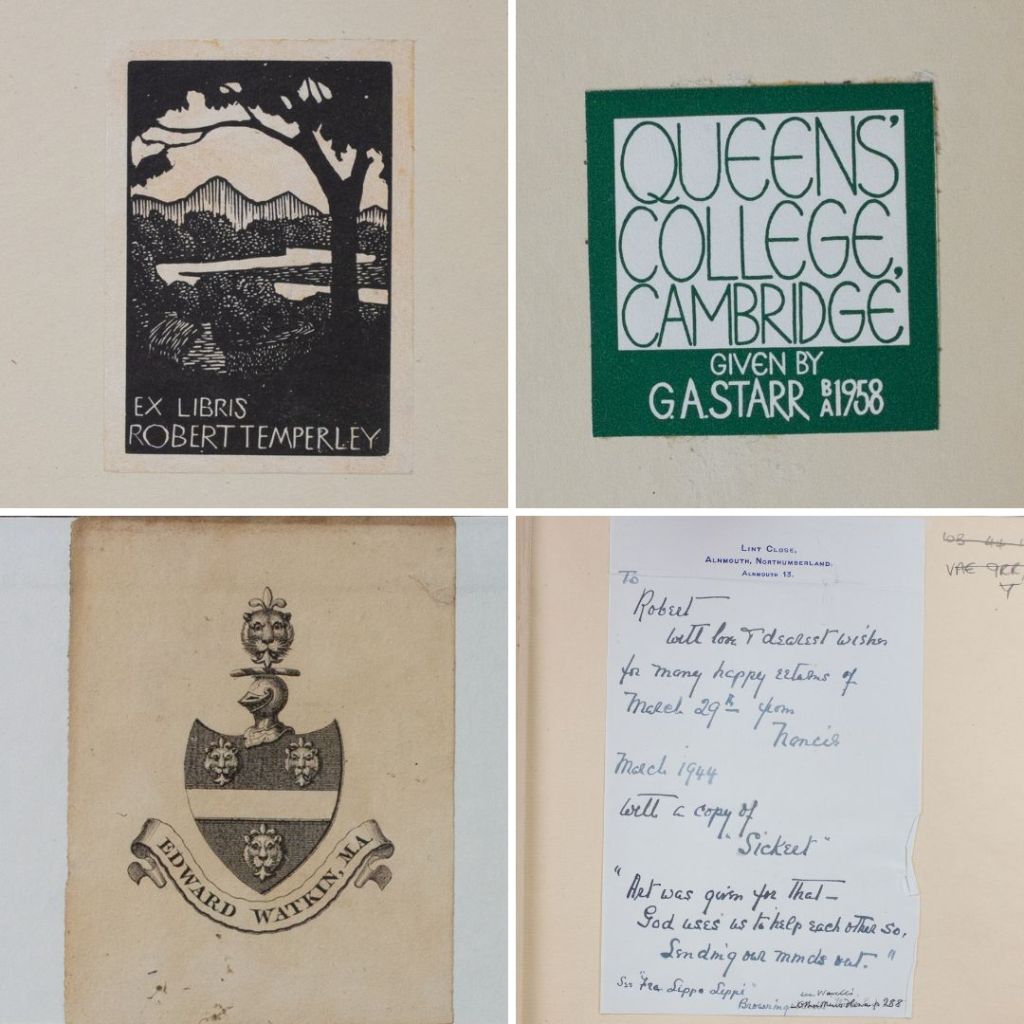By Rodney Thomson, Emeritus Professor at the University of Tasmania, Distinguished Academic Visitor at Queens’ College (Summer 2023,24).
Late in my last stay at the College in May-July 2023, Dr Tim Eggington (Queens’ Fellow Librarian) handed me an envelope containing three manuscript fragments (see below), now catalogued as Queens’ MSS 515 a-c, with a covering letter. The letter, addressed from former Queens’ Librarian, Emeritus Professor Anthony Spearing to Dr Eggington, stated that the fragments had been given to him by a workman on the new heating system in the Old Quad, ‘long ago’, possibly back in the 1960s.



One of them, a small scrunched-up piece of paper, attracted my particular attention. Evidently a flyleaf torn from a book, one side was blank but for a verse from the English Bible; the other was covered with writing, very dirty and mainly illegible. Nonetheless, some unusual Latin words showed through the murk, and the writing resembled the more informal style of Erasmus of Rotterdam. Erasmus had lived in the College 1511-14, as Professor of Divinity, so I thought this fragment might be important. I and Michael Reeve, formerly Kennedy Professor of Latin and Fellow of Pembroke set out to decipher the writing, which we dated to the early sixteenth century. It turned out to be a letter written by a son to his father, with no content but sentiments of gratitude and reverence. After having deciphered about two thirds of it, we left the Conservation Consortium and University Library to flatten and clean its surface, and make an MSI (multi-spectral imaging) scan of it.

This revealed the rest of the writing and enabled Michael to transcribe and translate all of it. It was now revealed to be a draft of a form of letter written by a student for practice, doubtless for an exacting master. Almost all of it was a cento of quotations from Cicero’s Letters to his Friends (Epistolae familiares), a most un-medieval text. It was probably not written by Erasmus, and yet his influence obviously lies behind it, and it marks a decisive change from the list of manuscripts that were in the Queens’ Library as listed in 1472 for Queens President Andrew Dockett. Queens’ was now, and remained, a very ‘humanist’ College.
The 200-odd early printed books held in the Old Library with pieces of manuscript used in their bindings are a largely unknown and untapped resource. One of the most remarkable of these fragments is located in the covers of I.6.8, a copy of Gothofredus, Auctores Latinae Linguae in unum Redacti …, printed at Lyon in 1585. At each end is a flyleaf, together most of a single leaf from a very large copy of Quintilian’s Institutes of Oratory, written in elegant humanistic bookhand by the unnamed scribe who also wrote Pembroke Coll. MS 168 and Oxford, Balliol Coll. MSS 138, of which this is a lost part (second leaf of lost quire 17), and 248D. The original complete copy was probably given to Balliol College by the great collector of humanistic books William Grey, bishop of Ely 1458-74, and must have been dismembered during the sixteenth century.






Leave a comment